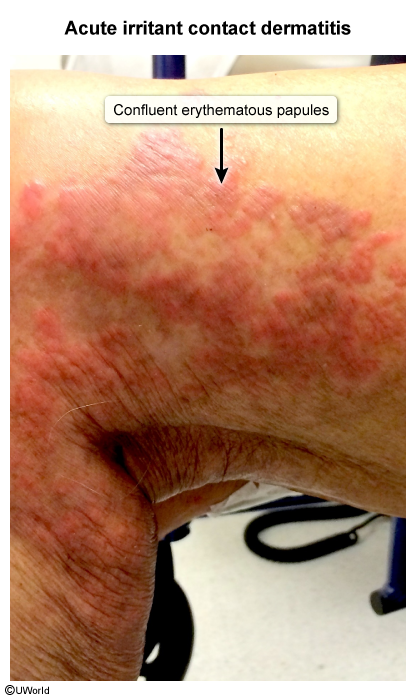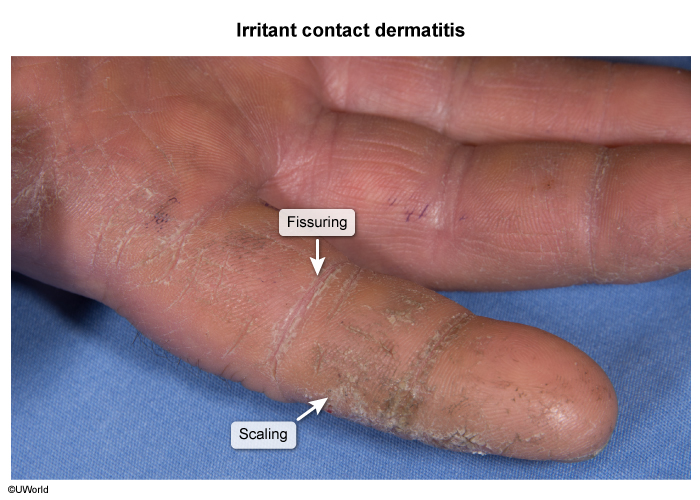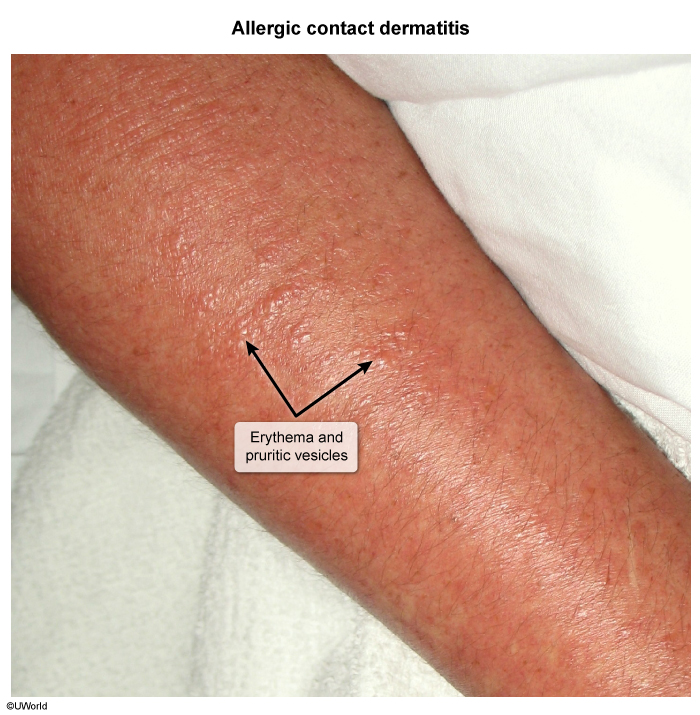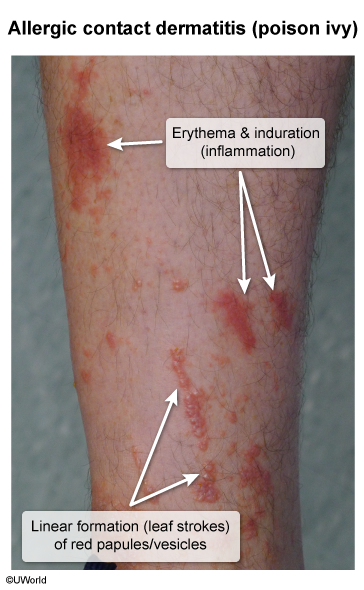Allergic/Irritant Contact Dermatitis
Article Sections
Introduction
Contact dermatitis is an inflammatory skin condition caused by exposure to an irritant that disrupts the skin barrier (irritant contact dermatitis [ICD]) or to an allergen that causes a type IV (delayed-type) hypersensitivity reaction (allergic contact dermatitis [ACD]). ICD and ACD have overlapping clinical presentations, virtually indistinguishable histologic features, and similar management strategies.
Pathophysiology
Chemical (eg, water, detergents, solvents) or physical (eg, metals, wood, fiberglass) irritants can disrupt the epidermal barrier through damage (eg, microtrauma) to keratinocytes, increasing epidermal permeability and water loss. A nonspecific inflammatory response follows at the site of exposure, likely caused by the activation of innate immunity and the release of cytokines from keratinocytes.
Allergic contact dermatitis (ACD)ACD is a type IV (delayed-type)
Continue Learning with UWorld
Get the full Allergic/Irritant Contact Dermatitis article plus rich visuals, real-world cases, and in-depth insights from medical experts, all available through the UWorld Medical Library.
Figures
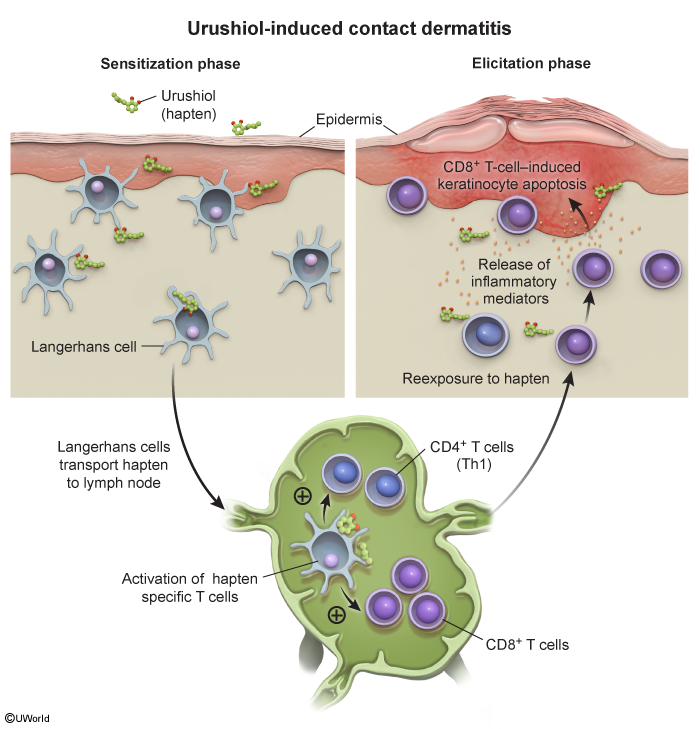
Images
